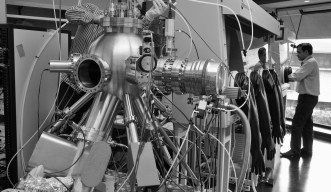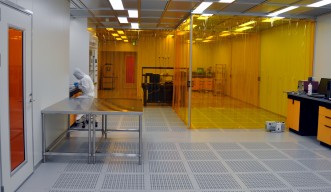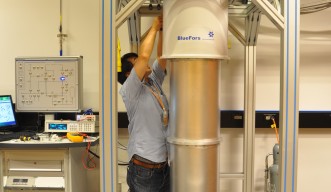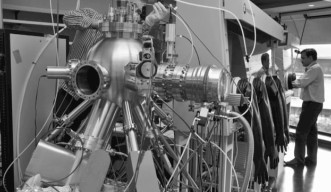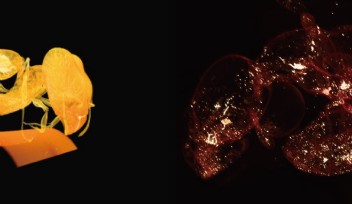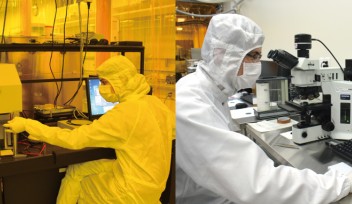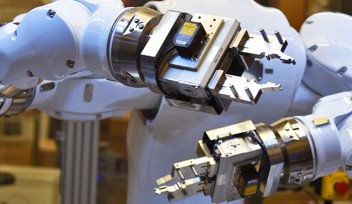Lab 2 Comes to Life
With much of the equipment moved in and research units steadily populating its labs, cubicles, and offices, Lab 2, which opened late last month, is swiftly coming to life.
For some newer units that lacked space of their own, the tailor-made lab spaces in the new building enable them to kick their research into full gear. Members of the Nanoparticles by Design Unit, for example, were limited to characterizing the properties of nanoparticles while based in Lab 1; now, with their new nanoparticle deposition system in place in Lab 2, they will be able to design and build their own particles as well. "The facilities requirements for our UHV deposition system were quite extensive and tightly specified,” notes the unit’s group leader, Cathal Cassidy. “The support from the Facilities Operation & Use section was tremendous, and our system was capable of nanoparticle deposition within 24 hours of beginning the installation. Staff from several third party companies were involved in the installation, all of whom commented enviously on the facilities support we have at OIST.” The unit will soon begin collaborating with other OIST units to try using nanoparticles to improve the efficiency of solar cells, and to use imaging techniques to learn more about the properties of the nanoparticles both by themselves and when inside living cells.
The Nanoparticles by Design Unit’s collaborators on the solar cells project, the Energy Materials and Surface Sciences Unit, have also moved in to the new building. That unit is using Lab 2’s clean room to build photovoltaic and organic electronic devices, which can have their performance destroyed by a single fleck of dust. The clean room has two sections, one with fewer than 1000 dust particles per cubic meter of air, and one with fewer than 100 particles per cubic meter (compared with millions per cubic meter in normal indoor air). “Before the clean room in Lab 2 was made available, our organic electronic devices suffered from issues caused by dust particles,” says Prof. Yabing Qi, the head of the unit. “But with the first batch of devices we tested in the clean room, we were able to get much better performance.” He notes that the move to the new building has also improved the performance of the unit’s atomic force microscope, which is extremely sensitive to vibration and did not perform well in its old home on the third floor of Lab 1, near a recirculating fan. Now, in a quieter environment on the ground floor of Lab 2, the microscope is picking up much less background noise, says Qi.
A few doors down from the clean room, the Quantum Dynamics Unit’s new cryogen-free dilution refrigerator is at work under the vaulted ceiling of the unit’s new lab space. Prof. Denis Konstantinov and his team use the instrument’s millimeter wave radiation and high magnetic fields to study the behavior of electrons on the surface of liquid helium, at just a fraction of one degree above absolute zero. In that environment the electrons exhibit novel quantum phenomena. Beyond gaining a new instrument, Konstantinov says the move has given the unit a chance to spread its wings. “In Lab 1 we were sharing space with the machine shop,” he says. “Now we have our own lab space!”
For press enquiries:
Press Inquiry Form










